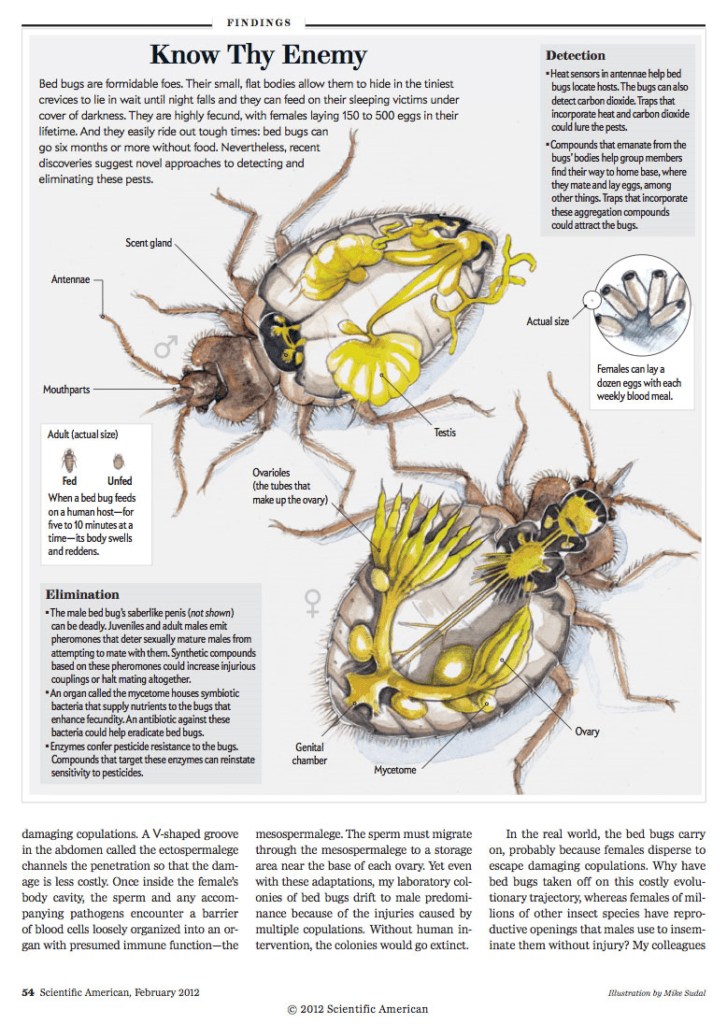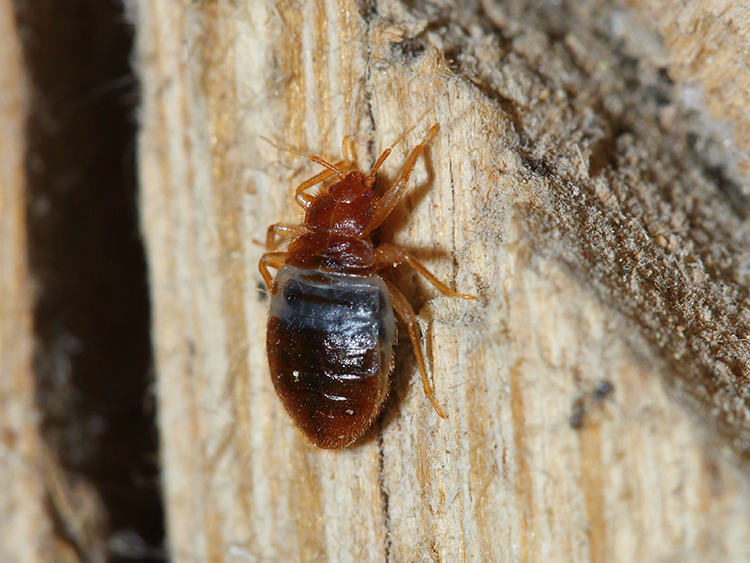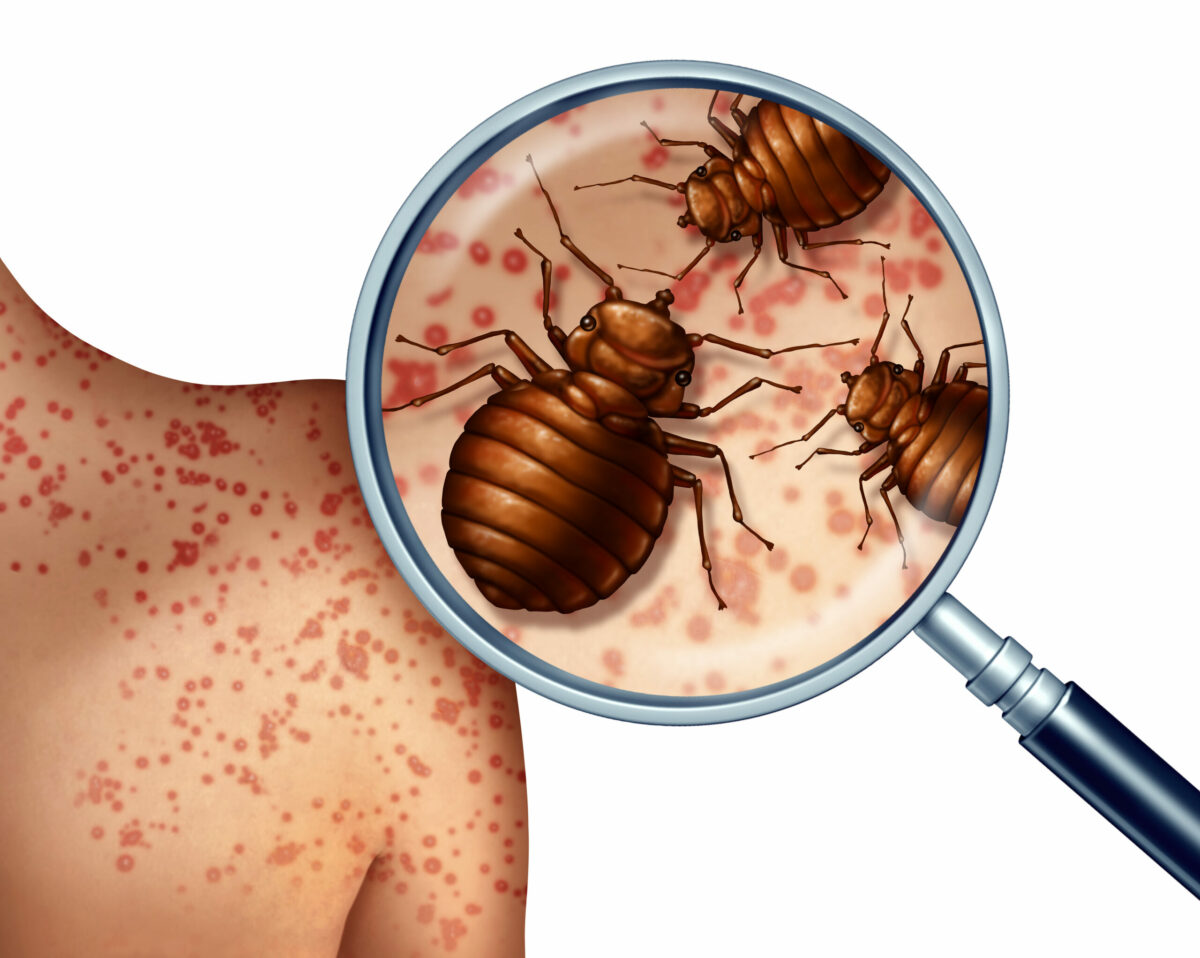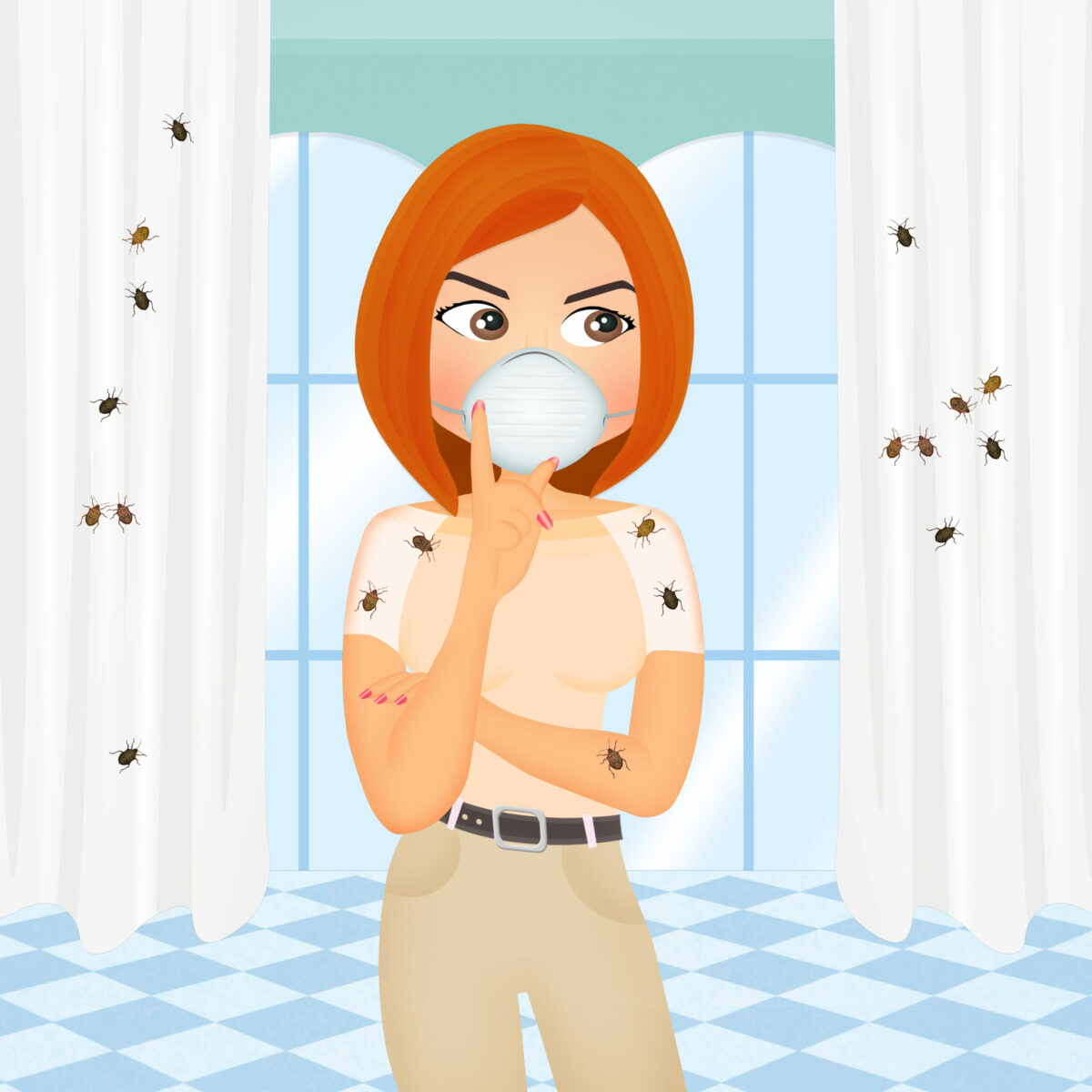It is a fact known to all that bed bugs are notorious pests. However, less is known about their reproductive secrets. This article seeks to unveil the mystery surrounding the mating and reproductive behaviors of these unwelcome inhabitants.
Understanding the Bed Bug: An Unwelcome Household Pest
Bed bugs, scientifically known as Cimex lectularius, are parasites that primarily feed on human blood. They are commonly found within crevices or cracks in mattresses, box springs, or furniture, waiting for a chance to have a blood meal.
Recognizing a Bed Bug: What Do They Look Like?
Adult bed bugs are brown, oval, flat-bodied insects about the size of an apple seed. However, after feeding, their bodies inflate and turn a reddish color. For more on bed bugs, check out The secret life of bed bugs for some interesting facts.
The Basic Ecology and Habits of Bed Bugs
Bed bugs are known to be sneaky, nocturnal pests that feed on sleeping hosts. Their feeding habits play a big role in determining their life-span. If a bed bug can feed regularly, it can live up to a year on average. However, if there is a shortage of food, their lifespan may decrease to just a few months. In addition, temperature also affects the lifespan of bed bugs. They thrive in warm environments, with their ideal temperature being around 80°F. At these temperatures, they can breed continuously and produce dozens of eggs at once. For more on bed bug bites, check out our article HERE.
Bed Bug Infestation: How Do Bed Bugs Get Around?
Contrary to popular belief, cleanliness does not deter bed bug infestations. Instead, the infestation is spread through travel, with bed bugs finding a way to accompany human hosts.
The Bed Bug Life Cycle: The Role of the Immature Bed Bug Nymphs
After hatching, bedbugs undergo five molting stages before reaching their mature form. These immature, yet sexually capable bed bug nymphs play a critical role in the perpetuation of bed bug infestations.
Sex Ratio: Are There Male and Female Bed Bugs?
Yes, there are both male and female bed bugs. Interestingly, there is usually a balanced sex ratio in most bed bug populations.
The Reproductive Anatomy of a Bed Bug
Bed bugs have evolved a distinct reproductive system that reflects their unusual mating process. A male bed bug is equipped with a hypodermic genitalia (needle-like penis), which they use to pierce the female’s exoskeleton and deposit sperm directly into the body cavity. The sperm flutters through her hemolymph (bug blood) to her ovaries for fertilization.

Bed Bug Reproduction: Unusual Mating Process Called Traumatic Insemination
The main reproduction process in bed bugs, traumatic insemination, involves the male bed bug piercing the female’s abdomen with his hypodermic penis and injecting his sperm directly into her body cavity, bypassing the female’s normal reproductive tract. This form of mating is unique among the various species of bed bugs.
The Harsh Reality of Being a Female Bed Bug: Spermalege and Bodily Damage
Female bed bugs typically have a structure called a spermalege to reduce the harmful effects of traumatic insemination. Despite having this specialized organ, frequent mating attempts can still lead to severe bodily damage and a shortened lifespan.
The Role of “Hypodermic” Males in the Bed Bug’s Mating Habits
Males have evolved an organ known as the ‘paramere’ which is capable of piercing the female’s abdomen for fertilization. This unique adaptation has led to a shift in mating habits away from traditional copulation towards a more aggressive insemination method.
“Hypodermic” males play a pivotal role in the bed bug’s mating process. Equipped with a needle-like reproductive organ, they pierce the abdomen of the females to commence insemination. However, the constant attempts to mate put a high level of stress on the females, which eventually leads to lower reproduction rates.
The Survival Tactics of Bed Bugs: Are They Evolving?
Bed bugs, over time, evolved counterstrategies to increase their survival. For instance, females may develop a thicker exoskeleton to reduce damage from repeated matings, exhibiting the fascinatingly ruthless ecology of bed bugs.
The Controversial Theory of Sex Ratio Manipulation in Bed Bugs
One theory postulates that bed bugs have evolved to produce more males than females. Unfortunately, this leads to costly traumatic insemination for the females that are overwhelmed by the numerous mate attempts.
The Result of Mating
The Reproductive Output of Bed Bugs Bed bugs are known for their high reproductive output and quick growth, making them a significant pest problem. The reproductive process of bed bugs involves unique aspects that help contribute to their rapid multiplication.
Female bed bugs can lay up to 5 eggs a day and around 500 eggs in their lifetime. The amount of offspring produced can vary depending on factors such as temperature, the female’s nutritional state, and the presence of other bugs. The higher the temperature (to a certain limit), the faster the bugs develop.
Adequate feeding on blood meals also ensures the survival and development of the eggs.
However, this form of mating comes at a cost to the females. Traumatic insemination causes physical harm and can also result in the transmission of pathogens from the male to the female. This leads to a shorter lifespan for the females, and some can even die from complications related to mating.
Typically, the female bed bug will try to leave the breeding ground after mating to lay her eggs in peace, but males often follow, which leads to a high concentration of bed bugs in a small area. This makes controlling an infestation rather challenging.
It’s also worth noting that some female bed bugs may have adaptive responses to this traumatic insemination. Some have developed reproductive tract structures that can direct the sperm towards the ovaries without causing as much harm.
In summary, the reproductive output of bed bugs is high and their aggressive mating method can lead to rapid population growth. This, along with their adaptability, contributes to their persistence as a widespread pest.
The Hatching Process: How Long Do Bed Bug Eggs Take to Hatch?
Bed bug eggs take about 6 to 10 days to hatch. After hatching, the nymphs go through five stages of development before reaching adulthood. Each stage requires a meal of blood before the next molt. With each progressive molt, bed bugs appear more like adults. This process usually takes about five weeks. For more on bed bugs, check out our article HERE
The Female’s Tragic Fate: Do Bed Bugs Lay Fewer Eggs as They Age?
Bed bugs, like many insects, face a decrease in fertility as they age. Studies have shown that, although female bed bugs can lay hundreds of eggs throughout their lifetime, their reproductive abilities significantly decline with age
Newly emerged female bed bugs, or those that have recently molted into their adult stage, are the most fertile. With an ideal feeding condition, these females can lay multiple eggs per day. However, as the bed bug ages and after multiple rounds of laying eggs, the number of eggs laid begins to decrease.
This is mainly believed to be due to physiological changes in the bed bug’s body.
Environmental factors can also play a role, such as the availability of hosts for feeding. Lack of sufficient food can accelerate the lowering of the female’s reproductive ability.
Additionally, older females might lay fewer eggs in comparison to younger females due to their waning energy levels. Laying eggs requires a significant amount of resources from the female, and as they get older, the energy level decreases, which might result in a decrease in the egg-laying rate.
However, a slight positive side to this scenario for female bed bugs is that with fewer eggs, there is less physical stress on their bodies towards the end of their lives. Despite laying fewer eggs, older females can still contribute a considerable number to the overall population size, given the high survival rate of these eggs into adulthood.
In conclusion, like many insects, female bed bugs do indeed lay fewer eggs as they age due to declining reproductive abilities and other environmental and biological factors.
Q&A
Q: How does a male bed bug inseminate a female bed bug in the reproduction process?
A: The male bed bug uses a process known as traumatic insemination. During this process, the male pierces the female’s abdomen with his specialized reproductive organ and injects his ejaculate directly into her body cavity. Fertilization occurs when the sperm reaches the ovaries.
Q: How many eggs can a female bed bug reproduce?
A: A female bed bug can lay about 200 to 250 eggs in her lifetime, depending on the number of times she mates and the conditions of her environment.
Q: How does the reproduction process contribute to the spread of bed bugs?
A: The rapid reproductive capabilities of bed bugs, coupled with the fact that a single bed bug can start an infestation, contribute to a fast spread of bed bugs. Since a female can lay up to 250 eggs in her lifetime, a single pair of bed bugs can result in a massive infestation in a short time.
Q: How long does it take for a bed bug to hatch from its egg?
A: Typically, it takes about 17 days for a bed bug egg to hatch, depending on the environmental conditions.
Q: What does a bed bug look like?
A: Bed bugs are small, flat insects that are brownish in colour. Adult bed bugs are about the size of an apple seed, while newly hatched bed bugs are about the size of a poppy seed. They are often found in bedding, mattresses, and bed frames.
Q: What is the PMC in male bedbug reproduction?
A: PMC stands for paramere, median lobe and copulatory phallus, the structures that make up the male bedbug’s external genitalia which are used in the traumatic insemination process.
Q: What is the sexual conflict in the bed bug reproduction process?
A: The sexual conflict arises from the traumatic insemination process itself. While males benefit from this method as it ensures their genetic dissemination, it often causes scarring, injury and increased mortality rates in females.
Q: What is the role of the mesospermalege in bed bug reproduction process?
A: The mesospermalege is a specialized organ in female bed bugs where the male pierces during traumatic insemination. It reduces the harm caused to the female during this process.
Q: How does traumatic insemination in bed bugs affect the female’s lifespan and mating rate?
A: Traumatic insemination causes physical harm to the females, increasing their risk of infection and decreasing their lifespan. As for the mating rate, it does not seem to deter female bed bugs from engaging in numerous mating events but it significantly shortens their lifespan.
Q: How does the alarm pheromone work in bed bug reproduction?
A: Bed bugs, particularly females, release an alarm pheromone in an attempt to discourage males from attempting traumatic insemination. However, this strategy isn’t always successful, and often results in multiple inseminations, which can harm the female.

































